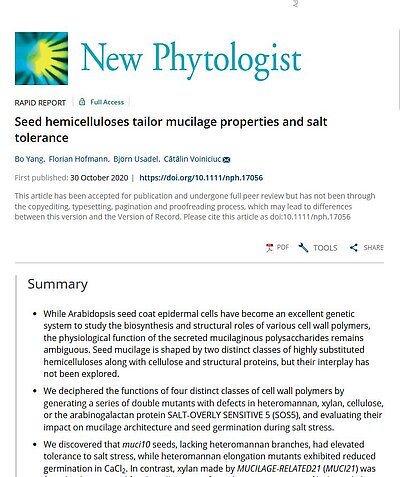Seed hemicelluloses tailor mucilage properties and salt tolerance.
In a study in New Phytologist, IPB scientists of the Independent Junior Research Group Designer Glycans recently shed light on the functions of various mucilaginous cell wall polymers of Arabidopsis seeds. The plant cell wall is composed of cellulose fibrils and structural proteins embedded in a matrix of pectins and various polysaccharides, called hemicellulose. In Arabidopsis and many other plant species, this matrix produces a distinct mucilaginous envelope around the outer shell of the seeds. While composition and biosynthesis of cell wall polymers are well studied, the physiological function of the secreted mucilaginous polysaccharides and the interaction of its components remain ambiguous.
In their study, the Halle scientists could decipher the function of four distinct classes of cell wall polymers by generating double mutants with defects in heteromannan, xylan, cellulose and an arabinogalactan protein, and evaluating the impact of these molecules on mucilage architecture and seed germination during salt stress. They found that seeds lacking heteromannan branches, showed an elevated tolerance to salt stress, whereas heteromannan elongation mutants germinated less effectively at higher salt concentrations. In contrast, Xylan plays an important role in the adherence of mucilage pectin to the microfibrils of cellulose. According to the authors, investigations of germinating seeds can provide insights into the synthesis, modification and function of complex glycans.



